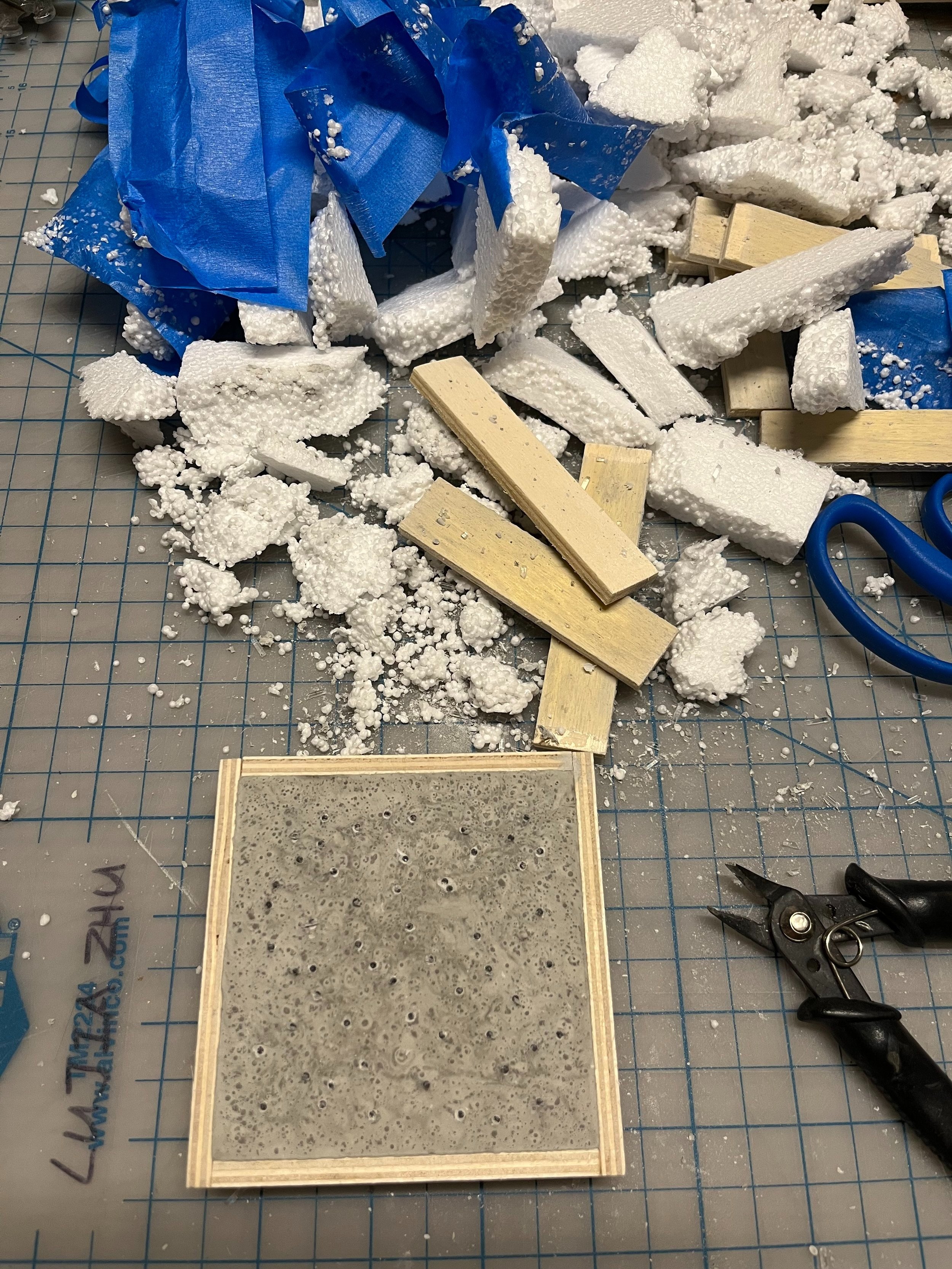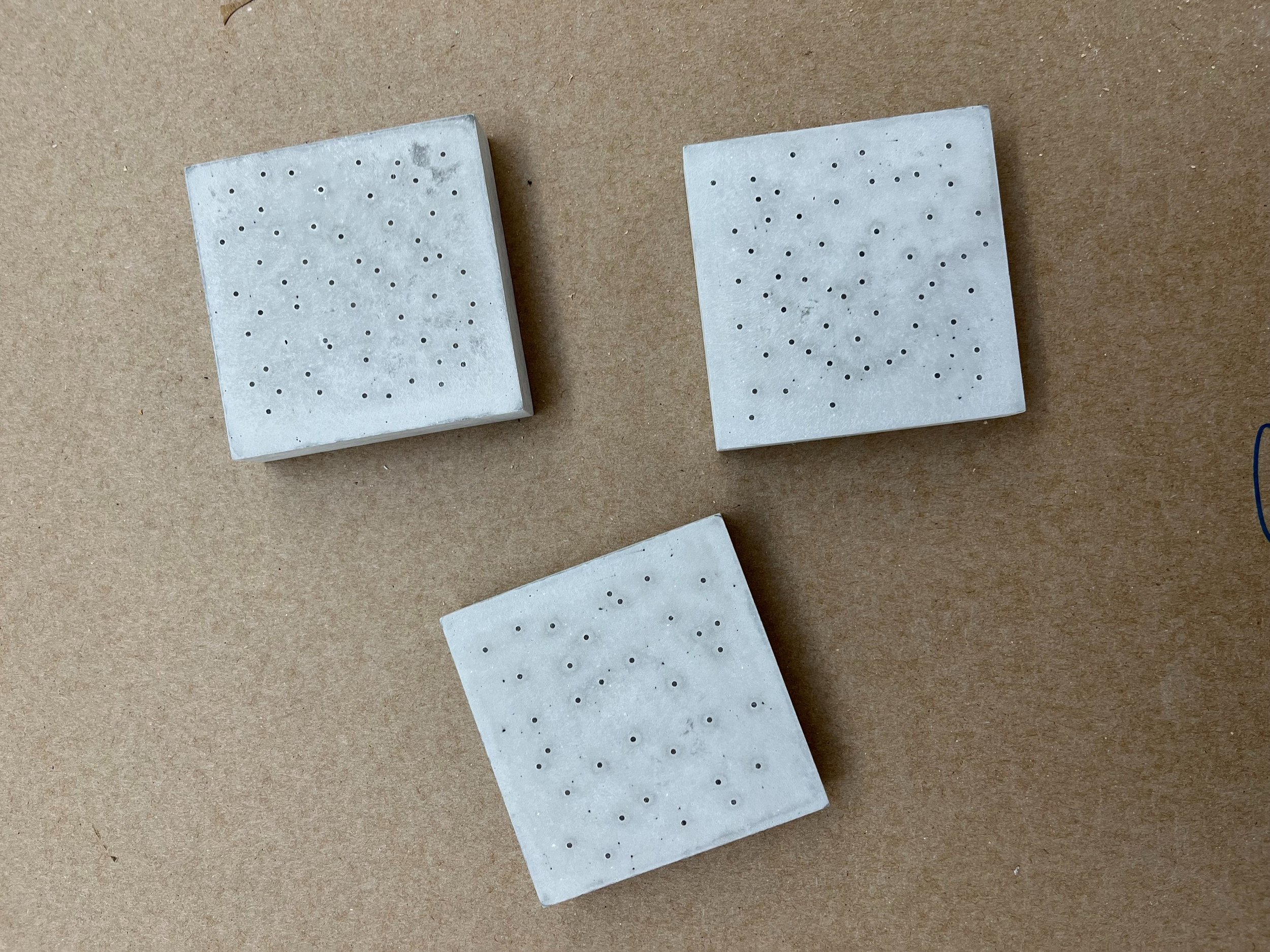REPETITION | 5 PIECES
Week 02 | 09/09/2022
Constellation Beverage Coasters
Hand making an item can be fun and relaxing, relatively. However, hand making a thing 5 times and having them look identical can be challenging.
The goal of this project is to make 5 beverage coasters, out of Rockite, with some optical fibers in all pieces, in order to turn out portrayals as constellations / stars.
Personally, making molds is always the most hectic part — they can not be too strong otherwise one won’t be able to break them afterwards; they cannot be too flimsy or they will bend; they cannot leak, etc. I chose some plywood sheets since they are cheap and easy to cut, glue, and break.
The reason why Rockite was chosen is because of the size of the project. The beverage coasters I wanted to make are roughly 3.5” x 3.5” x 0.5”. Rockite can provide smoother finishes than concrete (based on my understanding, could be wrong) and decent strength.
Optical fibers I chose are 0.06” / 1.5mm in diameter. I also got white craft foam as the base so optical fibers can easily be inserted.
6 molds were made and poured separately since I was doing this at home with limited space. The benefit of mixing and pouring one by one is I was able to have better and more precise control of the whole process.
figure 1 - 3.5” x 7” plywood slats
figure 2 - slats were cut and sanded
figure 3 - ready to get glued
figure 4 - walls of the mold, made an extra one just in case
figure 5 - white foam, the base of the molds
figure 6 - blue tape: prevent leaking + provide stability
figure 7 - ready for optical fibers
figure 8 - optical fibers are cut and randomly inserted into the foam
figure 9 - 0.75lbs Rockite to 3.0oz water
figure 10 - precise measurement of water
figure 11 - precise measurement of Rockite
figure 13 - all are poured elegantly without leaking
figure 15 - harder than I expected, especially the foam part
figure 17 - before sanding
figure 19 - round 2 sanding, 600 grit
figure 21 - final product, but with some imperfections on some edges
figure 23 - top view
figure 25 - top view 2
figure 12 - mixing
figure 14 - step 1 of taking it out
figure 16 - molds were successfully removed
figure 18 - sanded by palm sander, 80 grit, surfaces were flattened
figure 20 - round 3, 2000 grit (might be unnecessary)
figure 22 - side view
figure 24 - bottom view
figure 26 - bottom view 2
The result turned out well, besides some negligence during the sanding process with palm sander. It spins a bit fast.
The bottom still shows the foam, which I hope it could be smoother. A different type of foam might do the job. I was originally thinking of using a piece of American cheese to hold the optical fibers due to its smooth surface, but American cheeses are too thin.
Wood gains can still be seen on the sides, which, personally, I think are beautiful.
Overall, I think it was such a great practice to work on one piece for five times. Repetition seriously gave me more confidence as the process went on and I was able to work on each one more experienced than the previous one.


























